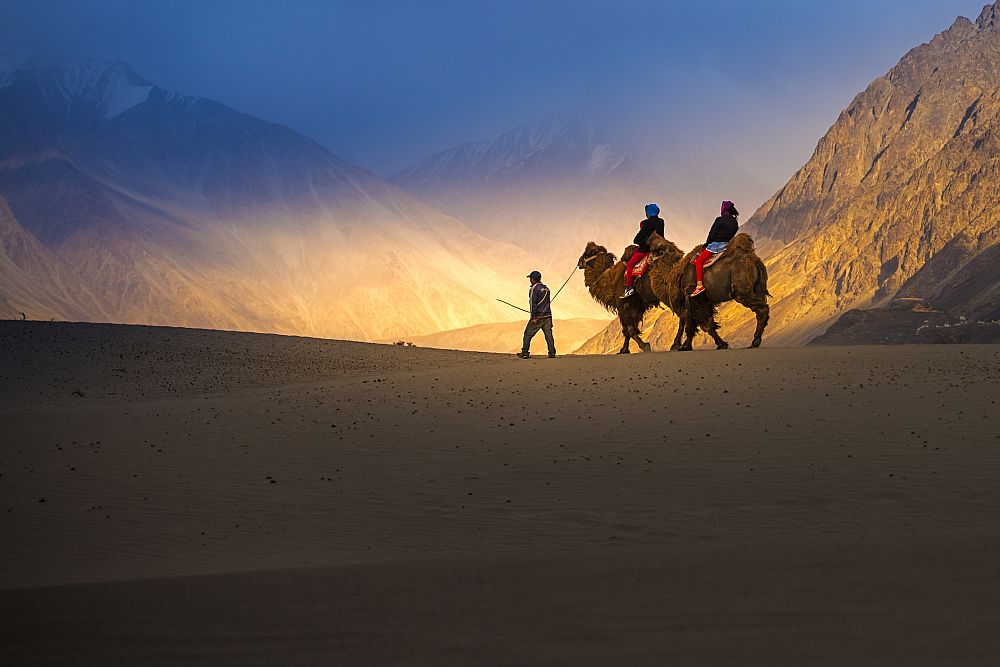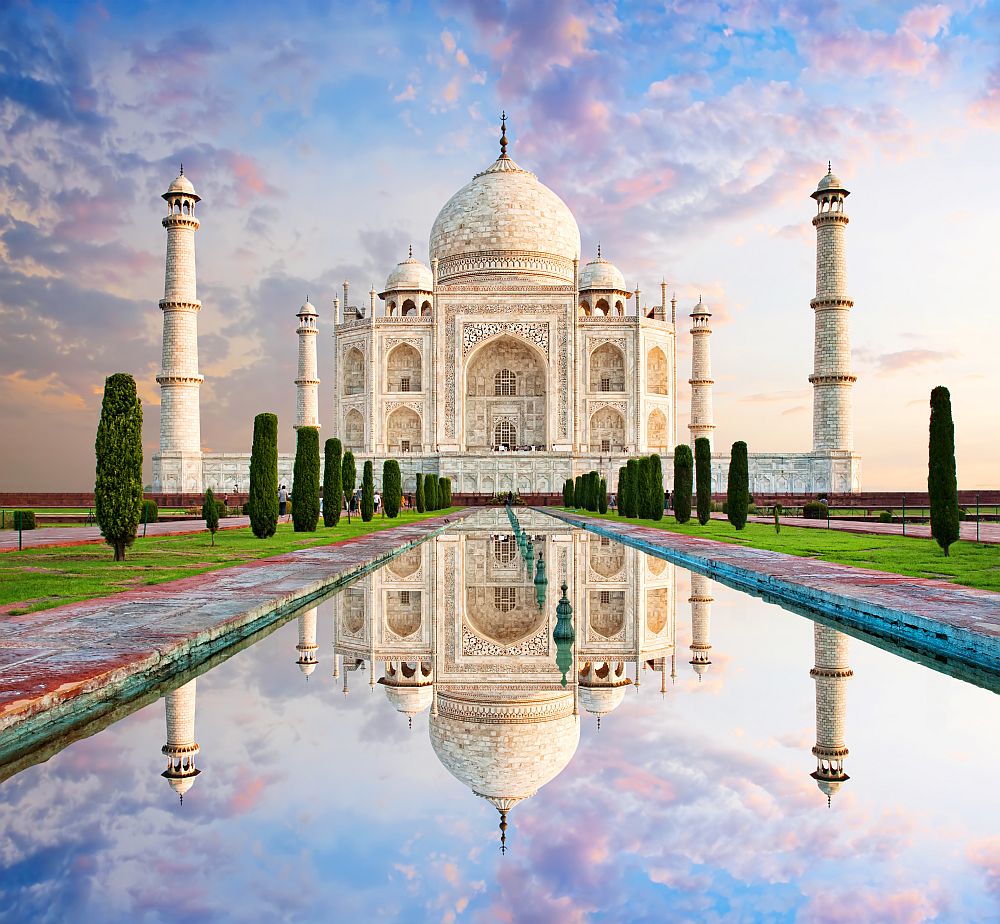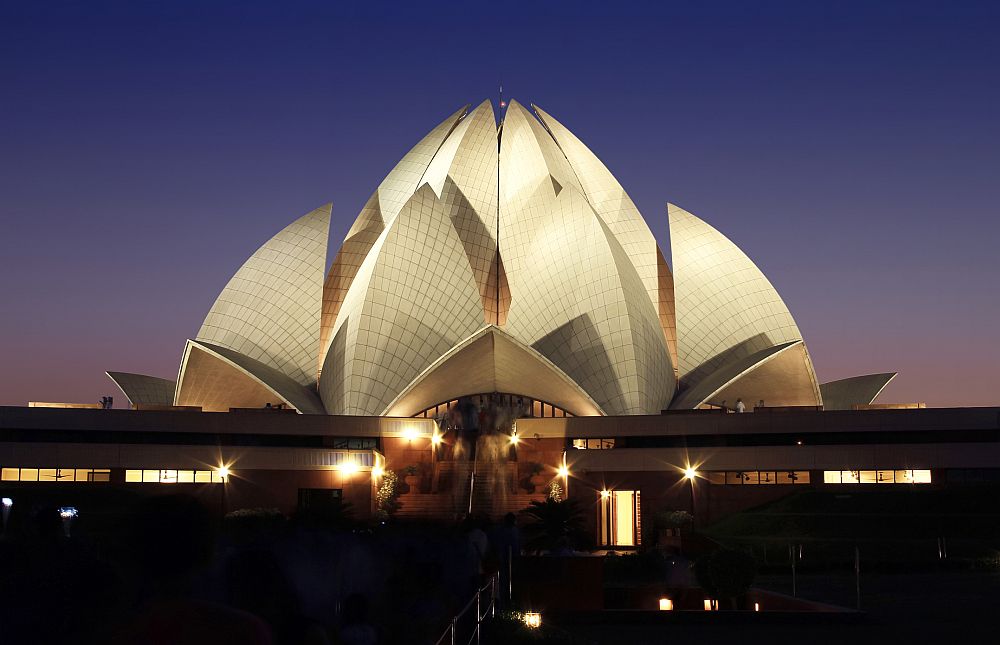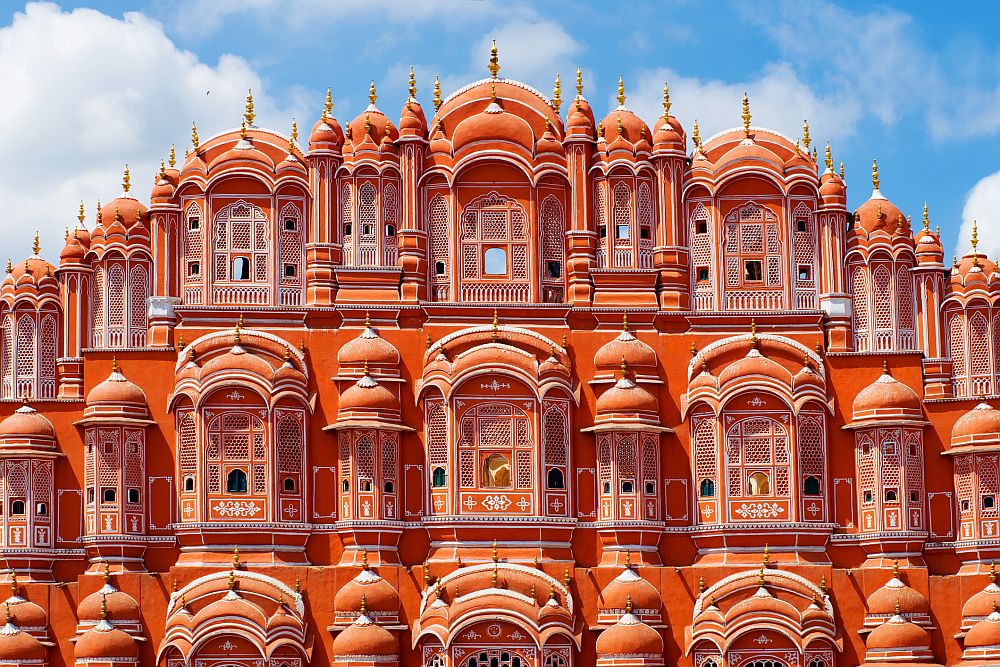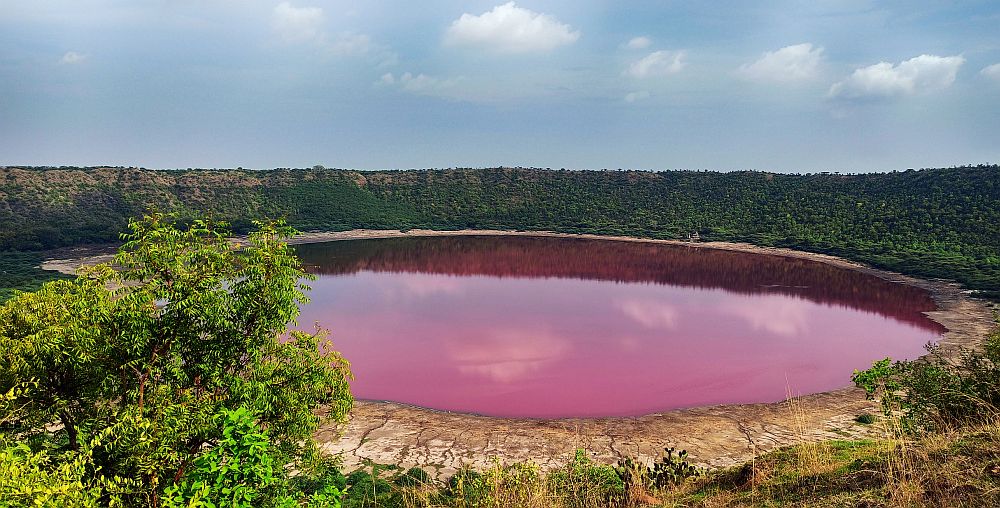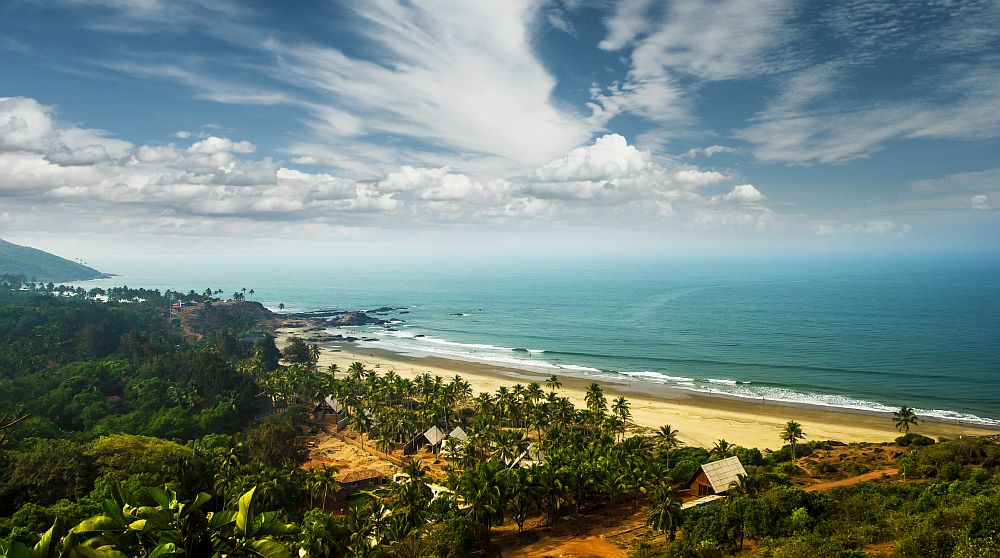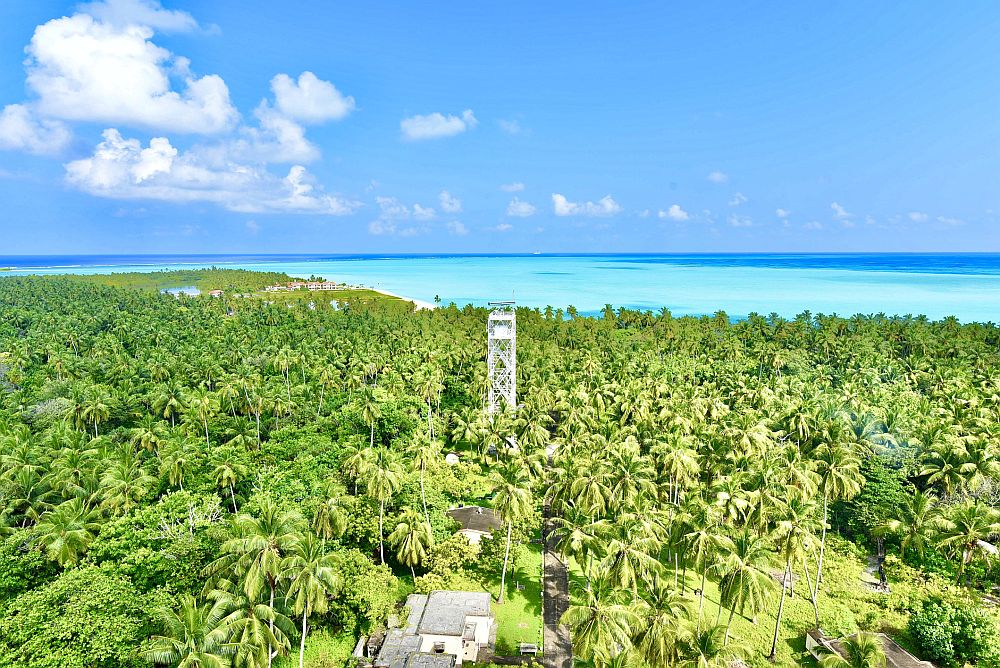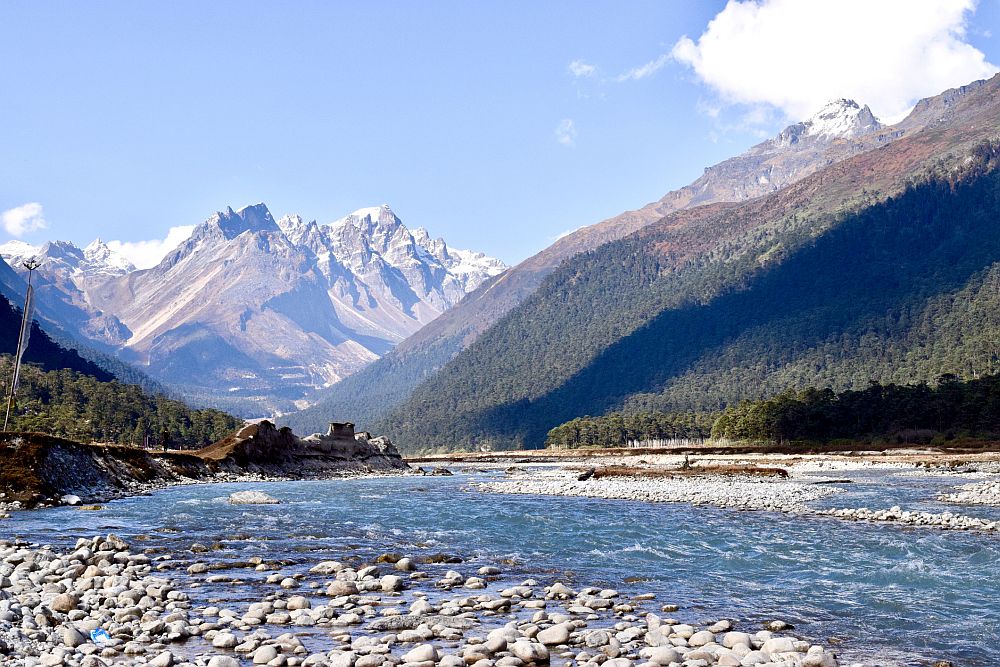India has also had massively varied geography, from the Himalayas’ towering snow caps to a 7500km coastline in the southern part of the country. In its west are gorgeous dunes, with panoramic hills to its east. Yet, India is also a home of mystique and fables, and romance. So how does one even start planning a trip to India, given the overabundance of natural and cultural treasures? We help you sort it out below, with our suggestions for the most beautiful places in India to visit.
Some Quick Travel Tips for India
India is as unpredictable as its monsoon weather. However, below are some expectations you should have during travel.
Expect Culture Shock
Most travelers often find it difficult to embrace India’s diversity until they are deep in its chaotic, fascinating, and often overwhelming settings. Before embarking on your India trip, you need to open up your mind to an unapologetically loud, colorful, and unique culture.
Slow Down
Have but a few steps to cover on your itinerary at a time. A task as simple as a hotel booking can take a lot of time, so if you are in a hurry, you will become frustrated. So instead, bring along your sense of humor and inner calm, and travel slowly. Give yourself plenty of R&R time along the way to prevent fatigue and burnout. Get out of the bustling cities and experience the charm of the most serene, beautiful places in India.
There Will Be Some Discomfort
Ever heard of the “Delhi Belly?” Well, this is a malaise that targets travelers and is characterized by diarrhea. India’s cuisine is like its culture; uniquely spicy and savory. You will enjoy it, but your stomach might not agree with it. So bring along some diarrhea medication just in case you need them.
Dress Appropriately
India is hot, so you need to pack light. You do not want to be that unfortunate chap that lugs around bags of clothes in the humid weather. Therefore, your clothes should be comfortable, lightweight, and loose. That said, Indian society tends to be on the conservative side, so cover-up, and avoid revealing, tight outfits. Baggy cotton outfits are perfect since they are breathable and will take on the rigors of rough travel.
Be Polite and Culturally Aware
India has unique ancient customs that are unlike anything that you have encountered before. As an illustration, you will have to take off your shoes before entry to a temple. You will also have to be careful about your body language. Contact, smiles, hugs, or kisses could be misinterpreted. Expect curious stares and head waggles, but also a lot of genuine warmth from the people–plus a whole lot of haggling.
Watch Out for Scammers
Tourists are always low-hanging fruits for scammers, so be on the watch out for tour booking, money exchange, or religious scams. You do not have to part with your money because someone put a mark on your forehead in a temple. Avoid making travel arrangements with unofficial third-party vendors.
Most Beautiful Places in India
Below is a list of some of the most beautiful places in India that capture the spirit of this vast land and its people. Let’s dive in.
1. Yumthang Valley, Sikkim
Yumthang Valley in Sikkim is the top pick on our list of the most beautiful places in India. Nestled between Bhutan, Nepal, and China, this area was once home to a mighty kingdom. Today, however, it is perhaps best-known for India’s rarest and most gorgeous orchids. In fact, there are over 500 species on offer–no wonder Yumthang Valley is also known as the Valley of Flowers. Should you traverse this difficult-to-access location, you might find the rare Dendrobium Nobile. An exquisite deep-to-pale purple-pink orchid, noble dendrobiums bloom in the dead of winter when all else is in hibernation. Perhaps unsurprisingly, it is also the state flower of Sikkim. Besides this famous orchid, the Yumthang Valley comes alive in floral beauty between July and October with a stunning variety of rhododendrons. There’s even an annual flower festival to celebrate the blooms! Sikkim also attracts hikers and climbers, as it is host to the world’s third tallest mountain, the Kangchenjunga. Snow skiing is thus a growing economy, though tourists also come to enjoy the natural hot springs and appreciate the feeling of space offered by one of India’s least population-dense states. The terrain is tricky and perhaps not for novice hikers, but the combination of the valley’s towering peaks, gently meandering rivers, and Sikkim’s fascinating culture makes the Valley of Flowers a must-see.
2. Agatti, Lakshadweep
Lakshadweep is an Indian territory of the Arabian Sea. A 35 island-rich archipelago, it also has a lagoon. Lakshadweep is part of the Chagos and Maldives chain of islands, lying in the region’s north edge. Agatti is, in our opinion, the most beautiful of these islands The island hosts an airstrip, which has become the gateway to Lakshadweep’s many attractions. Once you’ve landed, you’ll be spoiled for choice, whether its snorkeling or SCUBA diving amidst Agatti’s famous coral reefs, kayaking, sailing, fishing, or just chilling out on the pristine beaches amidst breathtaking coral white sands and turquoise waters. Despite the island’s small size, you’ll never run out of thrilling ways to appreciate the natural wonder of this remote atoll.
3. Munnar, Kerala
Munnar is one of the most romantic spots in India and is the South Asia country’s tea garden. Kerala is a hilly state in India’s south, giving Munnar a gorgeously green and serene rolling hills geography. The tea plantations’ elevation ranges between 1600 m to 7000m and has lush, glorious mountain features and captivating flatlands. Munnar was the British colonial government’s summer resort. Its winding lanes and picturesque, idyllic towns, craggy peaks, misty weather make it the most sought-after of India’s honeymoon destinations. In it are welcoming lodging and resort facilities for the traveler. The hilly region has the Kundala, Mudrapuzha, and Nallathanni rivers that water the surrounding grasslands and forests surrounding it. Every twelve years, the beautiful Neelakurinji blooms in Munnar’s valleys, bathing them in an ocean of blue. This rare spectacle last took place in 2018 and will happen again in 2023. The Anamudi Peak, India’s highest southern peak, is in Munnar. The region is also host to the endangered Nilgiri tahr, India’s wild mountain goats, the Salim Ali Bird Sanctuary, and the Eravikulam National Park.
4. Goa
Goa is a gorgeous, popular coastal area beloved for its pleasant weather, exciting nightlife, and excellent beaches. The dreamy island is one of India’s tiniest states and one of the most beautiful of them all. A tropical paradise, Goa has over 100km of coastline to explore. The Candolim, Morjim, Baga, Anjuna, and Calangute beaches are but a few of its pristine beaches. Tourists from all corners of the globe visit these beaches for windsurfing, kayaking, parasailing, and speed boating activities. In addition, Goa has some of the best seafood dhabas in India. Visit Goa in February and experience the wonder of the Goa carnival.
5. Nohkalikai Falls (Meghalaya)
Meghalaya lies in India’s northeast. The abode of clouds, as its name translates to, it is the home of some of the world’s rainiest spots. The green and relaxed state on the Khasi hills is home to Mawsynram, which receives 11,873 millimeters of rainfall on average each year. Most of this rain falls during India’s monsoon season, between June and September, so plan your trip accordingly. The most photogenic of Meghalaya’s tourist attractions is undoubtedly the Nohkalikai Falls. They are India’s highest waterfalls, plunging to depths of 335 meters or 1,115 feet. This dramatic beauty earns Meghalaya a spot on the list of the most beautiful places in India. Nohkalikai Falls has a tragic story attached to it, however. The lore goes that a native woman Likai leaped over the cliffs that surround the falls after a family tragedy. For this reason, Nohkalikai translates to “Jump of Ka Likai” in the local dialect. Nohkalikai Falls has a turquoise pool at its bottom surrounded by the red rock and the forest around it. While it is a standout feature of the locale, there are many beautiful falls in Meghalaya. Among the most scenic are Elephant Falls, Kynrem Falls, and Seven Sister Falls, to name but a few. The Cherrapunji Falls area has fairy tale-type root bridges that grow from the rubber fig tree’s aerial roots.
6. Lonar Lake, Maharashtra
Lonar Lake in Maharashtra is an exotic gem and a natural wonder that easily makes our list of India’s most beautiful places. It hit the headlines in 2020 when its water suddenly took on a pinkish hue. Scientists attribute the strange phenomenon to the lake’s high salinity levels and an increase of algae in its waters. Its origin story is equally fascinating, too. Once believed to be of volcanic origin, Lonar Lake is now classified as a crater lake; the mesmerizing spot came about as a result of a meteorite’s impact over 50,000 years ago. The crater has an average diameter of 2 km and is over 150 meters deep, while the lake itself stretches well over a kilometer wide. The lake has soda and saline, creating large soda deposits when its water recedes during the region’s hot weather season, and is striking to behold. Maharashtra itself is a state that lies on the Deccan Plateau in the western region of India. Around the lake are dense jungles that are home to diverse animals and plants. There are, for instance, many bird species making it a bird watcher’s paradise. Some of its famous birds include the parakeet hoopoes, brahmin ducks, baya weavers, red-wattled lapwings, herons, and larks.
7. Hawa Mahal, Jaipur, Rajasthan
Hawa Mahal, also known as the “Palace of the Winds” was built in Jaipur in 1799 AD by Sawai Pratap Singh for the women in his court. Its striking honeycomb structure has 953 delicate semi-octagonal windows built with one purpose in mind: Give the ladies privacy when watching the hustle and bustle of Jaipur’s old town. This gorgeous motif castle is one of the most beautiful places in India and is an excellent fusion of Hindu Rajput and Islamic Mughal architecture. Besides its incredible facade, Hawa Mahal is known a distinctive orange-pink hue because it was built using pink and red sandstone. The Islamic influence of the time shows in its stone’s filigree details, while the Rajput nuances show in its dome canopies, floral patterns, and fluted pillars. Fascinatingly, its shape forms the crown of the god Krishna and offers sweeping views of Jaipur.
8. Adalaj Stepwell, Ahmedabad
The Adalaj Stepwell was built in 1499 and is one of India’s bawdi or vav that provide household water to Gujarat’s arid regions. Besides their use as water collection facilities, they were sacred and part of the region’s religious rituals and festivals. Adalaj Ni Vav is five stories deep; and the view from its fifth floor makes the stepwell one of the most beautiful places in India. Look down from the stepwell’s tippy top, and you will have a mesmerizing view of the well’s deep turquoise water with a seemingly inherent inner glow. The surrounding stone tower further enhances the well’s beauty with exquisite ornamentation, carvings, and sculptures. Some of the artistic elements have Jain and Hindu symbolism, while others have Islamic aspects. The story behind the creation of the Adalaj Stepwell is both beautiful and tragic: It goes that Rana Veer Singh, a Hindu king, set out to build his people a vav to relieve them of water scarcity. However, before the stepwell’s completion, he went to war with Islamic Mehmud Begada and died in battle. Mehmud Begada sought Rana Veer Singh’s queen as a wife for her beauty. The queen, beautiful, Roopba agreed to marry Mehmud Begada if only he would wind up the construction process of Adalaj Stepwell. So Mehmud Begada constructed the stepwell as requested. The queen then leaped off the stepwell to her death for her loyalty to her dead husband and king.
9. Lotus Temple, Delhi
The Lotus Temple or Baha’i House of Worship is one of the most beautiful places of worship in India and the world. Fariborz Sahba, an Iranian architect, designed its exquisite superstructure. The temple takes the shape of a lotus flower with a dome in its interior, complete with nine arches for support. It’s not just beautiful though; it can seat over 2,000 people in its cavernous main hall. Inside, light falls gracefully through the lotus’ petals, which double as a functional skylight. Outside the temple are nine pools that reflect the surrounding beauty, making it appear as if the temple is floating in the water. The Baha’i faith believes in the Oneness of Religions, and for this reason, the temple does not have priests, idols, or photographs. Any person of any faith can visit the Lotus temple, but they cannot perform their rituals in it. The building opened in 1986 and has since had millions of visitors marveling at its splendid architecture.
10. Taj Mahal, Agra
The Taj Mahal is undoubtedly India’s most famous and iconic building, and is also regarded as the most beautiful place in India. The Taj Mahal is a monument to love, built in 1648 by Mughal king Shah Jahan as a memorial to his favorite wife. He himself if buried alongside Shah Jahan within, a testament to his enduring affection to his third wife. An architectural masterpiece by all accounts, it is built almost entirely of ivory marble. Inside is a guesthouse and mosque, adorned with breathtaking Islamic art. Framed by 17 hectares Mughal garden surrounding it alongside the Yamuna River, there’s little wonder why the Taj Mahal is a UNESCO World Heritage Site.
11. Nubra Valley, Ladakh
Nubra Valley lies in between Kashmir and Jammu. Flanked by the mighty Himalayas, Nubra Valley is a cold desert with an otherworldly feel during the winter. Come summer, however, flora takes over, transforming the moonscape into a green and lush valley. The deep-cut gorge is a part of the Tibetan Plateau that starts in China, extending to India’s Ladakh. The gorge is at an altitude of 10,000 feet and barely receives much precipitation. For this reason, the most striking feature of the Nubra Valley is the glaciers on its peaks and the desolate look of its valley. Nubra Valley is synonymous with monasteries, orchards, dunes, and Bactrian camels–giving the region an almost mythical feel. To access the valley, you have to cross the Khardung La, a unique experience in and of itself. After all, Khardungla Pass is the highest motorable road in the world; it can be a terrifying experience for anyone who fears heights and an exhilarating experience for thrill-seekers. The road does not have paving and can be slippery due to a combination of dirt and ice.
Most Beautiful Places in India: Conclusion
Our list is only intended to show you the major guideposts of what travel in India has to offer. Being such an ancient country, there are undoubtedly many more beautiful places worth a visit–we just consider these to be bucket list items that warrant a trip of their own. Hopefully, you’ve now got a better feel for where these places are, what they have to offer, and why you should drop it all and book a ticket right now! (We’re only half kidding.)
Have you ever been to any of these must-see Indian destinations? What beautiful place would you add to our list?
Leave a comment below with your answers!
